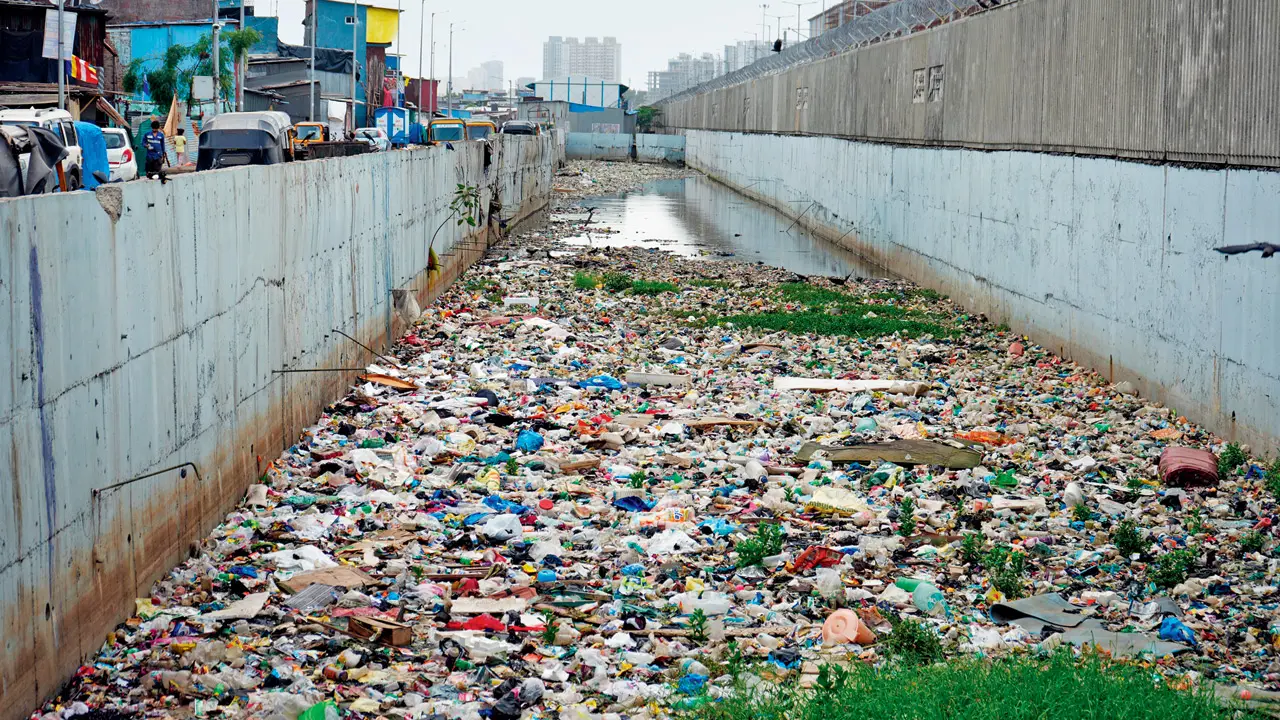Mankhurd grappled with clogged `nullahs` since a year
Cheeta Camp in Mankhurd has been grappling with severely clogged nullahs for over a year. An 800 metre stretch along the water formerly occupied by homes encroaching on forest land was cleared in 2017, but the debris was never removed. Since then, garbage collected from the nullah has been dumped onto it.

Cheeta Camp in Mankhurd has been grappling with severely clogged nullahs for over a year. Local residents, who once contributed voluntarily to cleaning efforts, have stopped doing so post-COVID due to financial constraints.
Despite repeated attempts since January to reach out to the authorities, residents have faced ongoing obstacles. Dharmesh Barai from the Environment Life Foundation has been working with local social activist Asif Sayed to involve officials in cleanup operations. Sayed said, “I’ve been trying to address the garbage issue for years, but only since January have we made a full-fledged effort to get the authorities to clean the area.”
Kids play at the playground near the nullah, which gets flooded after rain
An 800 metre stretch along the water formerly occupied by homes encroaching on forest land was cleared in 2017, but the debris was never removed. Since then, garbage collected from the nullah has been dumped onto it.
Children at risk
Mushtari Bano, a resident of 22 years, said, “The garbage piled on top of what used to be our houses is now where our kids play, no matter how much we warn them. The actual playground is muddy and unfit for use.”
The playground is located next to the nullah and garbage heaps. Even a 15-30-minute spell of rain floods the area with knee-deep water. A resident, requesting anonymity, shared, “We’re scared to step out when it rains. Snakes enter our streets and even homes. The water makes it difficult to see if it’s safe to move around.”
Piles of trash left next to the nullah in Cheeta Camp. Pics/Dweep Bane
The main cause of waterlogging is the garbage. Every time the nullah is cleaned, the waste is pulled out but left on the side, where it eventually flows back into the water and into the sea. “It’s frustrating to watch all that dirt return to the water. Some people have even been injured trying to stop it,” Sayed added.
Another nullah, adjacent to a public infrastructure project, is reportedly clogged with garbage. Post-construction, the nullah’s walls were raised for safety, but this has led to tragic consequences. “Children have died trying to retrieve a ball from the water. Because of the garbage covering, they can’t judge the depth, which could be over 10 feet,” Sayed said.
Trash still dumped
Ujwal Ingole, chief ward officer of Ward M East, said, “We’ve taken active measures to clean the nullahs and prevent blockages, but some people still throw garbage directly into the water.”
The lack of public awareness has long been a problem in the area. Bano, along with other local women, has been trying to educate residents about the harmful effects of dumping waste near water bodies. “We speak to them nearly every week, but many still sneak out to throw trash. Still, we can’t entirely blame them—the garbage collectors often miss days, and people can’t keep trash inside their homes for long,” said Samans Mary, a Cheeta Camp resident.
Household wastewater and drain water also flow directly into the nullah, polluting the water where children often bathe and play. Sachin More, Round Officer from the Turbhe division of the Navi Mumbai Mangrove Range Forest Office (Central Mumbai), said, “We began the cleanup two days ago and are transporting the removed waste to the Govandi landfills. It’ll take a few more days to finish, but we’re confident we’ll be done by the end of this week.”

 Amritpal Singh Sanhotra
Amritpal Singh Sanhotra 





